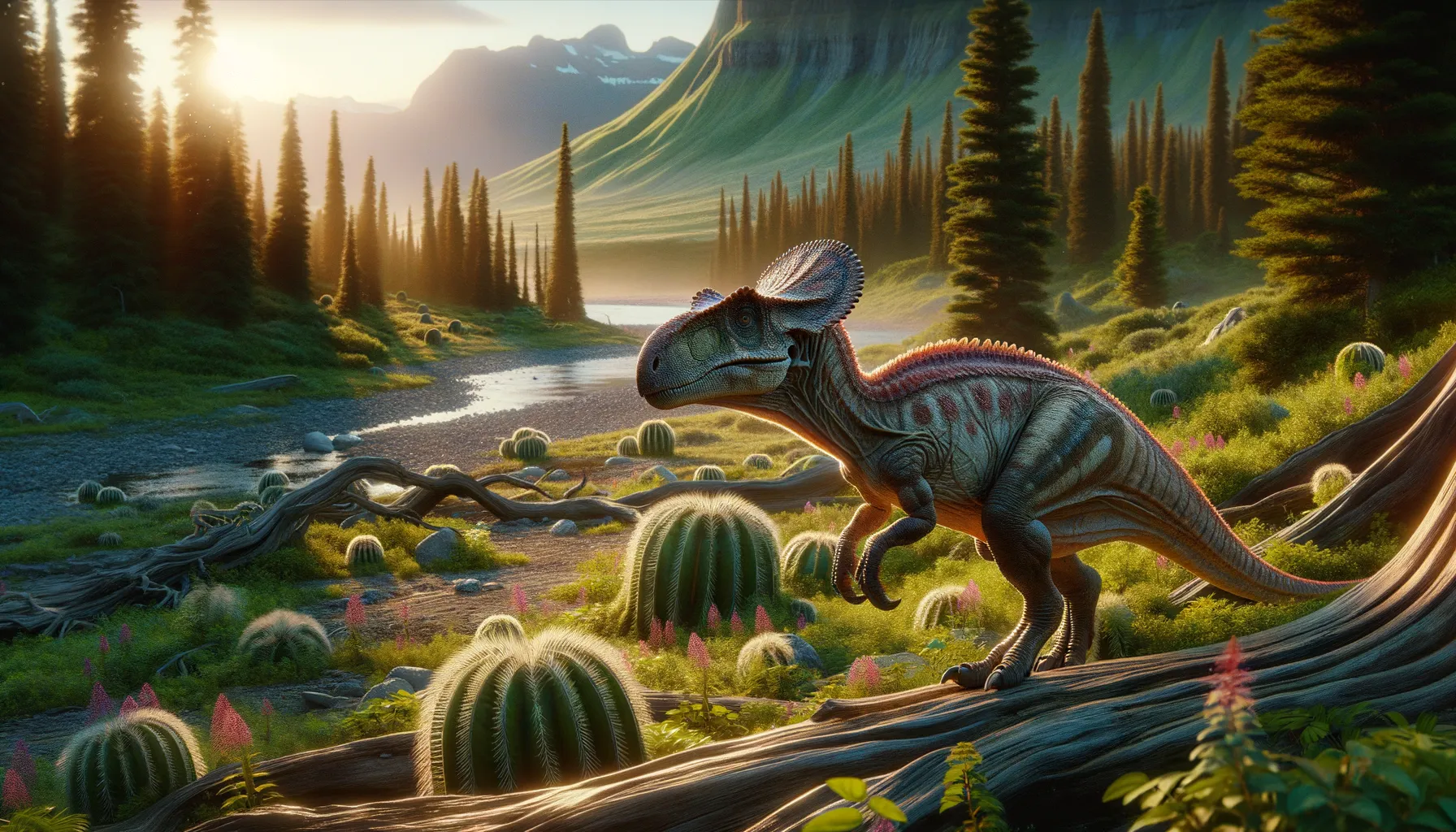
Texacephale
Dome-headed herbivore of simplicity.
Period
Cretaceous
Length
Approximately 2 meters in length.
Height
Stood about 1 meter tall.
Weight
Estimated to weigh around 100 kilograms.
Texacephale was a small, plant-eating dinosaur known for its domed skull, which likely served as a means of defense or display. Living during the Late Cretaceous period, it resided in what is now North America. As a member of the pachycephalosaurid family, it shared features common to its relatives, such as a robust build and distinctive skull shape. Fossil evidence places it among the unique faunas of its time.
Diet
Texacephale was an herbivore, primarily eating plants, leaves, and possibly seeds. Its teeth were well-suited for chewing tough vegetation, allowing it to thrive in its environment.
Hunting
As a herbivore, Texacephale did not hunt. Instead, it foraged for plant materials. Its behavior would have been more about searching for food sources rather than hunting prey.
Environmental challenges
Texacephale faced various environmental challenges, including competition for food with other herbivores. It also needed to keep away from predators who could easily spot its slow movement. The changing climate of the Cretaceous period may have also posed difficulties, as vegetation types shifted over time.
Speed
Likely slow-moving, given its build.
Lifespan
Possibly around 20 to 30 years.
First discovery
Discovered in Texas in 2010.
Fun Facts
- Texacephale is named after Texas, where its fossils were discovered, and the word 'cephale' meaning 'head' in Greek.
- This dinosaur lived during the Late Cretaceous period, around 70 million years ago.
- Texacephale is known for its thick skull, which suggests it might have used head-butting as a form of social interaction or defense.
- It was a relatively small dinosaur, estimated to be about the size of a large dog.
- Texacephale was a part of the pachycephalosaur family, a group of dinosaurs known for their dome-shaped skulls.
- Its discovery was first announced in 2010, making it a relatively recent addition to the known dinosaur species.
- Paleontologists believe Texacephale was an herbivore, mainly feeding on plants and leaves.
Growth and Development
Texacephale likely grew at a steady pace, reaching maturity over several years. Like many dinosaurs, it likely hatched from eggs and underwent significant changes as it developed. Its domed head probably became more pronounced as it matured.
Habitat
Texacephale lived in a forested environment with access to a variety of plant life. Its habitat may have included open woodlands and areas with dense vegetation. This ecosystem provided both food and shelter, crucial for its survival.
Interaction with other species
Texacephale likely coexisted with other herbivorous dinosaurs, sharing the same plant resources. It had to be cautious of predators, such as larger theropods, that also roamed its environment. Its dome-shaped head might have played a role in establishing dominance or during mating seasons.
Natural lifespan
Texacephale is estimated to have lived for around 20 to 30 years in the wild.
Reproduction
Like many dinosaurs, Texacephale reproduced by laying eggs. Its nesting habits may have included cooperation among groups to protect and incubate the eggs. Parental care post-hatching might have included guiding juveniles towards food sources.
Social behaviour
Texacephale might have exhibited social behaviors manifested through group foraging or possible dominance displays using their unique skull structure. It may have lived in small herds for protection and cooperative care of the young.
Fossil locations
Fossils of Texacephale have been found in Texas, USA. This location provides insights into the types of environments it inhabited. The discovery site has increased our understanding of Cretaceous ecosystems in North America.
